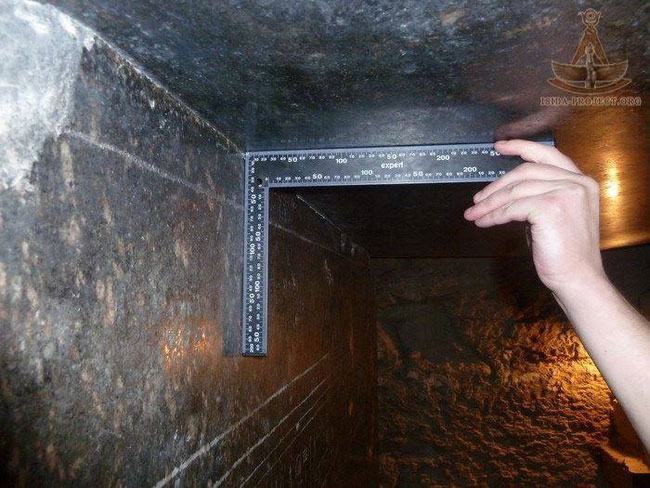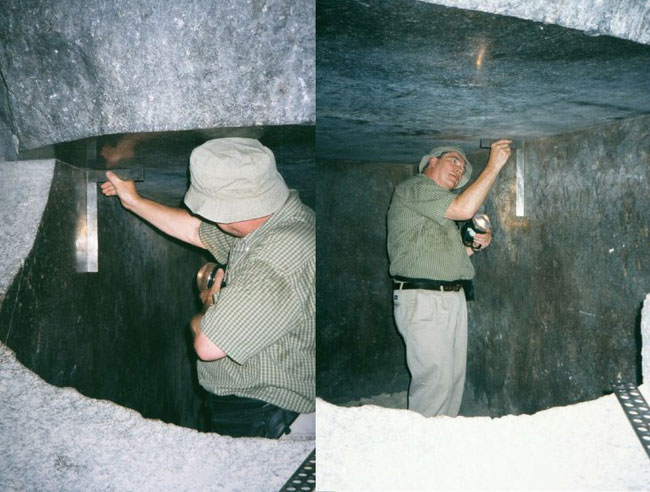Ancient maze mystery with giant stone boxes weighing hundreds of tons of square shaped edges
The Serapeum Saqqara Temple is located in the northwest of the Djoser Pyramid in the Saqqara archaeological site. According to archaeologists, it was the burial ground of the Apis cows, the embodiment of God Ptah - the god of creation and power of Egypt. The Saqqara Cemetery is located near Memphis, Egypt. It is thought to have been built by Ramesses II (the third pharaoh of the 19th Dynasty in Egyptian history) around 1300 BC.
Since its discovery in 1850, Serapeum Saqqara has puzzled archaeologists and researchers, and the excavated tunnels have since become the subject of debate.

The ice boxes have 90-degree right angles.
This majestic ancient labyrinth is home to 25 huge stone boxes, weighing 70-100 tons. The ancient Egyptians who authored these incredible "boxes" possessed great minds and incredible knowledge in fields such as geometry or mathematics.
The lid of these boxes weighs 30 tons and is made from the same rock. After finding them, people opened some boxes with the help of gunpowder but found them completely empty. This makes it impossible for researchers to explain the purpose of assembling giant boxes.
The question is whether these boxes existed because the ancient Egyptians wanted to make a tomb to commemorate the Apis cows, and if so, why not find any remains? The Apis cows are extremely sacred creatures for ancient Egyptians and were one of the first sacred beliefs in ancient Egyptian history. Historians believe that the Apis cow was both a god and the embodiment of Egyptian pharaohs.

The purpose and manner of creating these giant ice boxes gave researchers a headache to explain.
Interestingly, most of these boxes are made of solid granite - an extremely hard rock mined at a quarry about 800 km from Saqqara, while the rest are made of diorite - an even material. even harder and found in a more remote place.
The size accuracy of the boxes is also a factor that overwhelms researchers or anyone who visits the place when the deviation is only about one thousandth of an inch. The time to build these boxes was thousands of years ago, but the questions still puzzled researchers to this day: How did the ancient Egyptians do this? What are we missing out here?

Most boxes are made of pink granite - an extremely hard stone mined from a remote quarry.
The ancient Egyptians had knowledge of applied mathematics and geometry hundreds of years before the Saapeqara Serapeum was built. Their intelligence and abilities are undisputed here.
We all know that the earliest known geometry books were written on the Rhind papyrus and the Moscow papyrus. Hundreds of years after these ancient texts, the ancient Egyptians were able to create extremely accurate buildings with 90-degree right angles.
The only question left is how? And from where did the ancient Egyptians get this knowledge? Where are the tools used in these works now? Why are these giant boxes empty?
Could the knowledge and technology of building them actually come from the stars as many ancient astronaut theorists suggested? Or are we missing out on something in history? Was an extremely important moment in ancient history overlooked by orthodox scholars, one that could explain the knowledge and miraculous abilities of ancient civilizations like Egypt?
- Discovered a new giant moonfish, weighing up to 2 tons
- Why are round pizza in square boxes?
- China: Drive a bus through a giant glass bridge to demonstrate the safety of the bridge
- American kiosks
- Russian meteorites leave hundreds of tons of dust in the atmosphere
- 5,000-year-old giant wheel on the plateau
- Giant icebergs move towards Australia
- Detecting dinosaurs 26m long, weighing 65 tons
- The mysterious 'tunnel maze' near the famous ladder pyramid
- Catch the giant fish
- Catch huge pythons weighing 100kg
- Mysterious grave under Roman square
 The truth about the mysterious red-haired giant at Lovelock Cave
The truth about the mysterious red-haired giant at Lovelock Cave Inunaki Tunnel: The haunted road leading into Japan's 'village of death'
Inunaki Tunnel: The haunted road leading into Japan's 'village of death' The mystery of the phenomenon of human reflection before dying
The mystery of the phenomenon of human reflection before dying 6 mysterious phenomena, although science has been developed for a long time, still cannot be answered
6 mysterious phenomena, although science has been developed for a long time, still cannot be answered